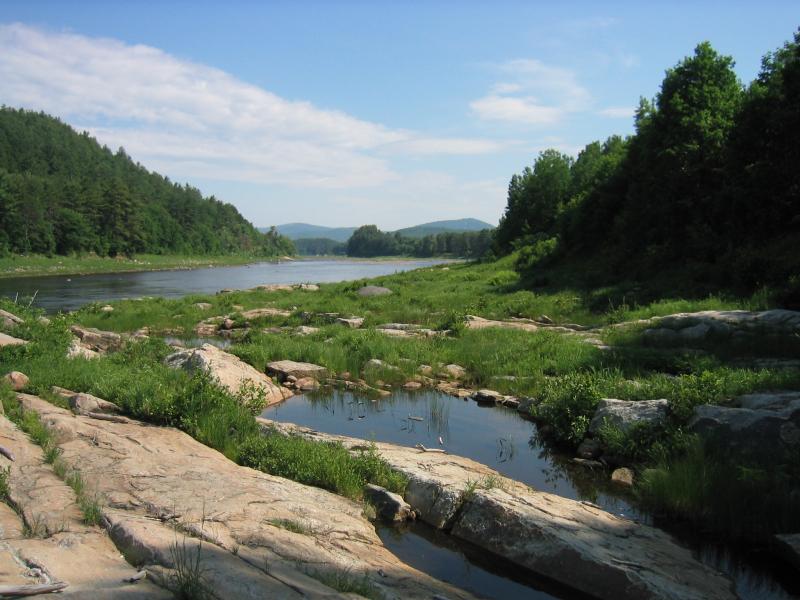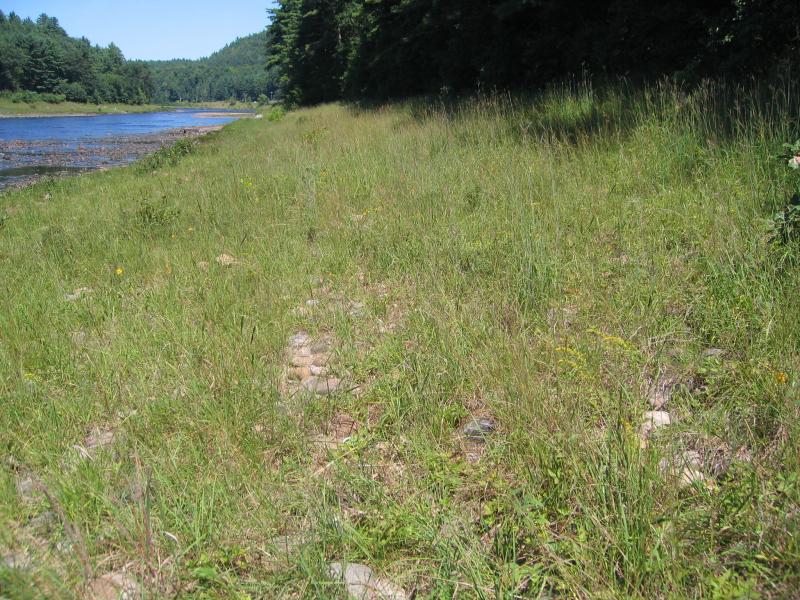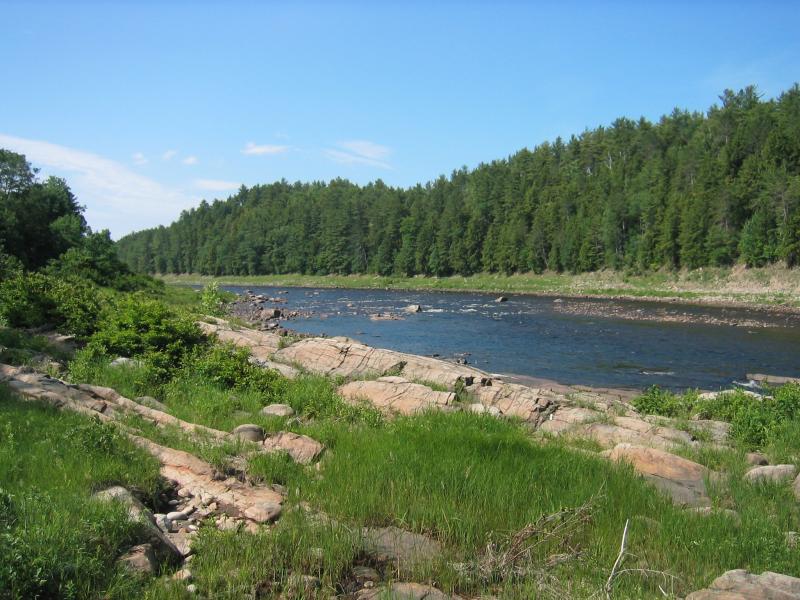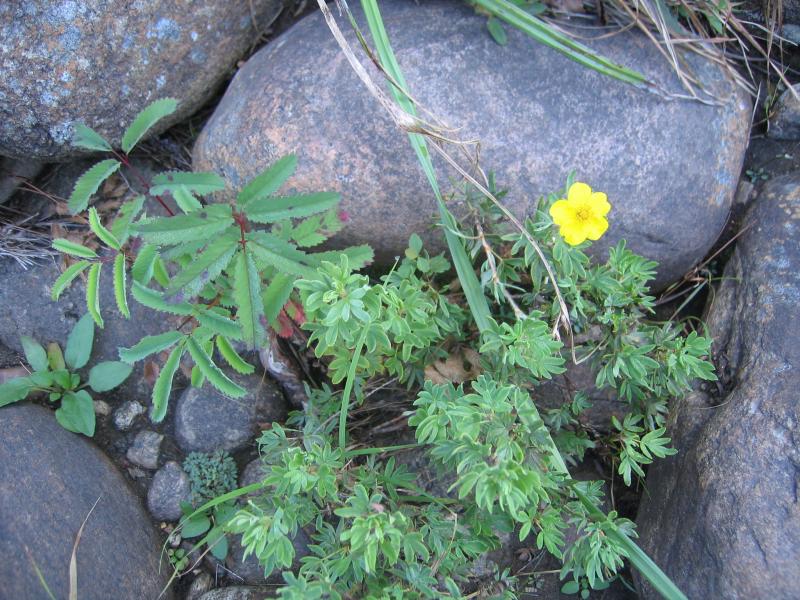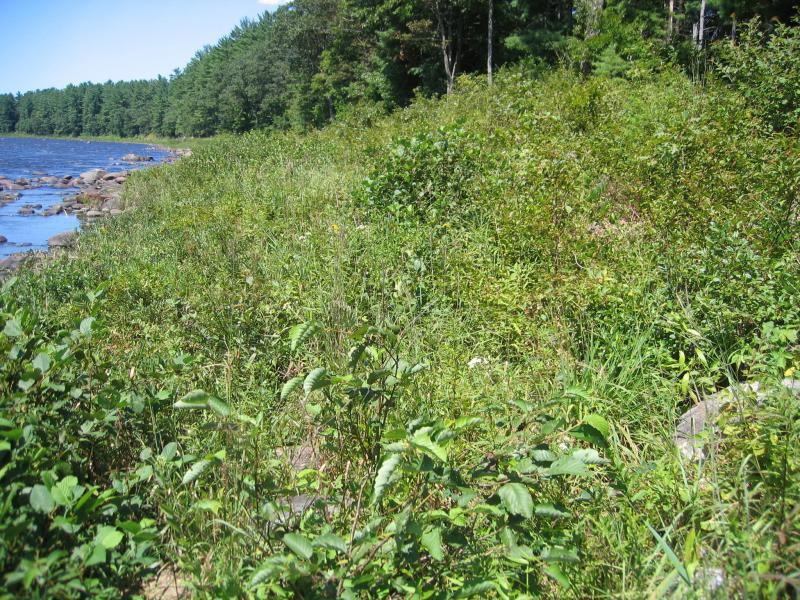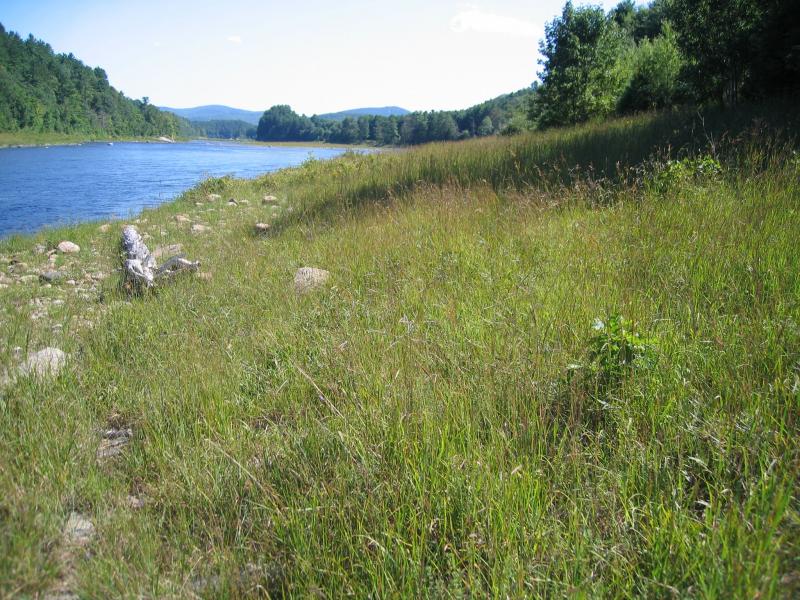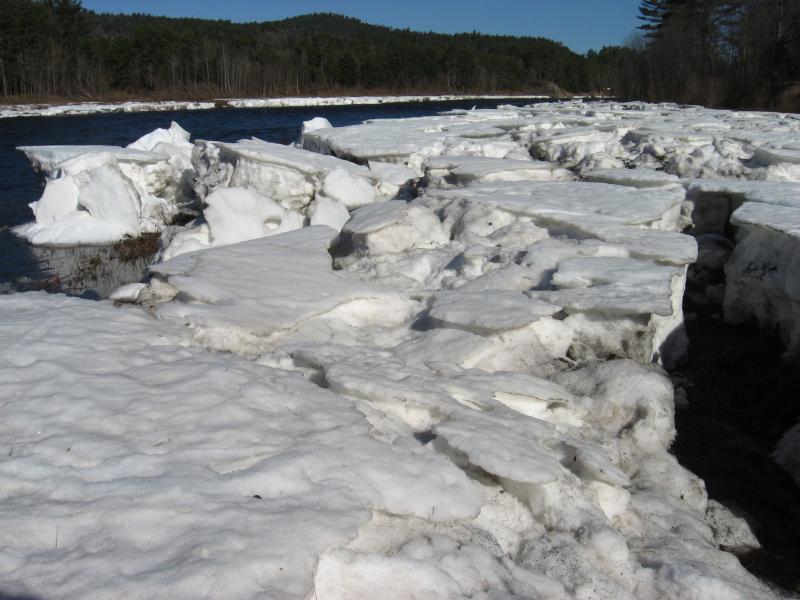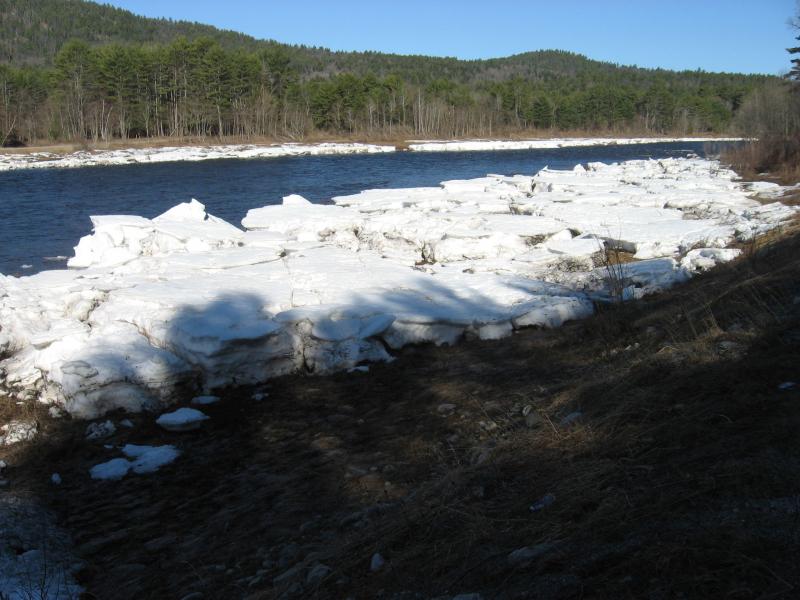Riverside Ice Meadow
- System
- Terrestrial
- Subsystem
- Open Uplands
- State Protection
- Not Listed
Not listed or protected by New York State.
- Federal Protection
- Not Listed
- State Conservation Status Rank
- S1
Critically Imperiled in New York - Especially vulnerable to disappearing from New York due to extreme rarity or other factors; typically 5 or fewer populations or locations in New York, very few individuals, very restricted range, very few remaining acres (or miles of stream), and/or very steep declines.
- Global Conservation Status Rank
- G2G3
Imperiled or Vulnerable globally - At high or moderate risk of extinction due to rarity or other factors; typically 80 or fewer populations or locations in the world, few individuals, restricted range, few remaining acres (or miles of stream), and/or recent and widespread declines. More information is needed to assign either G2 or G3.
Summary
Did you know?
Riverside ice meadows occur along rivers where floating pieces of ice are pushed up into the shore during the winter, forming an ice pack that remains into spring. The ice scours the meadow and often removes woody species. This natural disturbance keeps woody species from taking over the area and promotes the growth of herbaceous plants. In spring the ice melts and creates a cool microclimate, shortening the growing season. The ice pack also deposits organic matter that has accumulated in the ice during the winter.
State Ranking Justification
There are an estimated 10 to 20 occurrences statewide. Few documented occurrences have good viability and few are protected on public land or private conservation land. This community is limited to the upper reaches of large rivers in the mountainous areas of upstate New York, and there are only a few high quality examples. The current trend of this community is probably stable for occurrences on public land or private conservation land, or declining slightly elsewhere due to moderate threats that include shoreline development (especially roads and bridges), trampling by visitors, and invasive species.
Short-term Trends
The number and acreage of riverside ice meadows in New York have probably declined slightly in recent decades as a result of shoreline development, trampling by visitors, and invasive species.
Long-term Trends
The number and acreage of riverside ice meadows in New York have probably declined moderately from historical numbers likely correlated with past shoreline development, trampling by visitors, and invasive species.
Conservation and Management
Threats
Riverside ice meadows are threatened by development (e.g., residential, agricultural, industrial), either directly within the community or in the surrounding landscape. Structures built along the shoreline are a particular threat to this community (e.g., riprap, boat launches, cabins). Other threats include habitat alteration (e.g., road crossings, excessive logging in adjacent uplands,gravel mining in river channel), and relatively minor recreational overuse (e.g., boating, ATVs, trampling by visitors, campgrounds, picnic areas, fishing, trash dumping). Threats to the adjacent river may apply to the ice meadows (e.g., pollution, nutrient loading, sedimentation, impoundments/flooding, water release for rafting). Several riverside ice meadows are threatened by invasive species, such as purple loosestrife (Lythrum salicaria), reed canary grass (Phalaris arundinacea), reedgrass (Phragmites australis ssp. australis ), Canada bluegrass (Poa compressa), spotted knapweed (Centaurea biebersteinii), and Japanese knotweed (Fallopia japonica).
Conservation Strategies and Management Practices
Where practical, establish and maintain a natural forested buffer to reduce storm-water, pollution, and nutrient run-off, while simultaneously capturing sediments before they reach the ice meadow. Avoid habitat alteration along the shoreline and surrounding landscape. Restore riverside ice meadows that have been unnaturally disturbed (e.g., remove obsolete impoundments in order to restore the natural hydrology). Prevent the spread of invasive exotic species into the riverside ice meadow through appropriate direct management, and by minimizing potential dispersal corridors, such as roads and bridges.
Development and Mitigation Considerations
Where practical, establish and maintain a natural riparian buffer to filter storm-water, pollution, and nutrient run-off from surrounding uplands and to capture sediments before they reach the riverside ice meadow. Avoid habitat alteration along the shoreline and in surrounding landscape. Minimize potential dispersal corridors for exotic species, such as roads and bridges. Maintain or restore the natural flood and ice scour regime.
Inventory Needs
Survey for occurrences statewide to advance documentation and classification of riverside ice meadows. Continue searching for large sites in good condition (A- to AB-ranked).
Research Needs
Research the ice scour regime, especially the formation of frazil ice. Statistically compare plot data from riverside ice meadows to other similar natural communities (e.g., floodplain grassland, cobble shore, shoreline outcop, calcareous shoreline outcrop, and riverside sand/gravel bar) on rivers such as the Delaware, Neversink, Mohawk, and lower Hudson Rivers).
Rare Species
- Calamagrostis stricta (Northern Reed Grass) (guide)
- Carex buxbaumii (Brown Bog Sedge) (guide)
- Carex crawei (Crawe's Sedge) (guide)
- Carex emoryi (Emory's Sedge) (guide)
- Carex garberi (Elk Sedge) (guide)
- Carex sychnocephala (Many-headed Sedge) (guide)
- Halenia deflexa (Spurred Gentian) (guide)
- Juniperus horizontalis (Creeping Juniper) (guide)
- Neottia auriculata (Auricled Twayblade) (guide)
- Ophiogomphus anomalus (Extra-striped Snaketail) (guide)
- Prunus pumila var. depressa (Dwarf Cherry) (guide)
- Solidago ohioensis (Ohio Goldenrod) (guide)
- Triantha glutinosa (Sticky False Asphodel) (guide)
- Trichophorum clintonii (Clinton's Club Sedge) (guide)
- Viola novae-angliae (New England Violet) (guide)
Range
New York State Distribution
Riverside ice meadows are found along the upper reaches of large rivers in the mountainous areas of upstate New York. Occurrences are currently known from the Adirondack Mountains within the the Eastern Adirondack Low Mountains (Hudson River), the Western Adirondack Foothills (Sacandaga River), and the Central Adirondack Mountains (Hudson River). Riverside ice meadows are also known from the St. Lawrence and Lake Champlain Valley (St. Regis River).
Global Distribution
This community is possibly limited to the northeastern U.S., the northern fringe of the High Allegheny Plateau, and possibly portions of southern Canada. This range is estimated to span north to southern Canada, west to the Adirondack Mountains of New York, and east to Maine.
Best Places to See
- Hudson River Shoreline Preserve, Adirondack Park (Warren County)
- Adirondack Park, Silver Lake Wilderness Area (Hamilton County)
- South of The Glen (Warren County)
- Hudson Gorge Primitive Area, Adirondack Park (Hamilton County)
Identification Comments
General Description
A meadow community that occurs along the margins of large rivers, and that has a vegetation composition and structure that is shaped by an extensive ice pack, which builds up during winter as ice floes are pushed ashore. Riveside ice meadows occur on cobble shores or outcrops, and often have two or three distinct vegetation zones. A seepy zone along the river shore may have wetland species such sweet-gale (Myrica gale), large cranberry (Vaccinium macrocarpon), twig-rush (Cladium mariscoides), and beakrush (Rhyncospora capitellata). Riverside ice meadows with broad cobble shores often have a dry patchy grassland, with little bluestem (Schizachyrium scoparium), big bluestem (Andropogon gerardii), and Indian grass (Sorghastrum nutans) as dominant species. Farthest inland, a shrubby zone may have species such as hazelnut (Corylus americana), bush honeysuckle (Diervilla lonicera), interupted fern (Osmunda claytoniana), and red raspberry (Rubus idaeus).
Characters Most Useful for Identification
Riverside ice meadows are open herbaceous- and shrub-dominated communities that occur adjacent to large rivers on cobble shores or rocky outcrops. A significant ice pack, which can be as deep as 8 feet (2.4 m), shapes this community and is often present into late April. The vegetation may occur in zones, with a wet meadow along the shore, a dry patchy grassland just upland from the river, and a shrubby zone farthest from river.
Elevation Range
Known examples of this community have been found at elevations between 785 feet and 2,756 feet.
Best Time to See
The characteristic ice pack associated with this community can be observed during late winter and into spring. The vegetation of this community peaks in mid to late summer, with showy wildlflowers such as woodland sunflower (Helianthus divaricata), meadow-sweet (Spiraea alba), and butterfly-weed (Asclepias tuberosa), and with characteristic grasses such as little bluestem, Indian grass, and big bluestem.
Riverside Ice Meadow Images
Classification
International Vegetation Classification Associations
This New York natural community encompasses all or part of the concept of the following International Vegetation Classification (IVC) natural community associations. These are often described at finer resolution than New York's natural communities. The IVC is developed and maintained by NatureServe.
- Twisted Sedge - Indian-hemp - Flatsedge species Riverbed Vegetation (CEGL006536)
- Eastern Sandcherry / Tufted Hairgrass Riverscour Wet Meadow (CEGL006437)
NatureServe Ecological Systems
This New York natural community falls into the following ecological system(s). Ecological systems are often described at a coarser resolution than New York's natural communities and tend to represent clusters of associations found in similar environments. The ecological systems project is developed and maintained by NatureServe.
- Central Appalachian River Floodplain (CES202.608)
- Central Appalachian Stream and Riparian (CES202.609)
Characteristic Species
-
Trees > 5m
- Acer saccharum (sugar maple)
- Fraxinus americana (white ash)
- Tilia americana var. americana (American basswood)
- Ulmus americana (American elm)
-
Shrubs 2 - 5m
- Acer rubrum var. rubrum (common red maple)
- Alnus incana ssp. rugosa (speckled alder)
- Carpinus caroliniana ssp. virginiana (musclewood, ironwood, American hornbeam)
- Fraxinus americana (white ash)
- Populus tremuloides (trembling aspen, quaking aspen)
- Quercus rubra (northern red oak)
-
Shrubs < 2m
- Acer rubrum var. rubrum (common red maple)
- Alnus incana ssp. rugosa (speckled alder)
- Arctostaphylos uva-ursi (bearberry)
- Aronia melanocarpa (black chokeberry)
- Betula populifolia (gray birch)
- Carpinus caroliniana ssp. virginiana (musclewood, ironwood, American hornbeam)
- Comptonia peregrina (sweet-fern)
- Cornus amomum ssp. amomum (silky dogwood)
- Cornus sericea (red-osier dogwood)
- Dasiphora fruticosa (shrubby-cinquefoil)
- Diervilla lonicera (bush-honeysuckle)
- Fraxinus americana (white ash)
- Ilex mucronata (mountain holly)
- Ilex verticillata (common winterberry)
- Myrica gale (sweet gale)
- Populus tremuloides (trembling aspen, quaking aspen)
- Prunus pumila var. depressa (dwarf cherry)
- Prunus virginiana var. virginiana (choke cherry)
- Quercus rubra (northern red oak)
- Rosa virginiana (Virginia rose)
- Rubus allegheniensis (common blackberry)
- Rubus flagellaris (northern dewberry)
- Salix eriocephala (heart-leaved willow, Missouri willow)
- Salix nigra (black willow)
- Spiraea alba var. latifolia (broad-leaved meadow-sweet)
- Spiraea tomentosa (steeplebush)
- Ulmus americana (American elm)
-
Vines
- Apios americana (groundnut)
- Clematis virginiana (virgin's-bower)
- Parthenocissus quinquefolia (Virginia-creeper)
- Smilax herbacea (common carrion-flower)
- Toxicodendron radicans ssp. radicans (eastern poison-ivy)
-
Short vines
- Clematis virginiana (virgin's-bower)
-
Herbs
- Andropogon gerardi (big bluestem)
- Apocynum androsaemifolium (spreading dogbane)
- Apocynum cannabinum (Indian-hemp)
- Calamagrostis canadensis var. canadensis (Canada bluejoint grass)
- Carex flava (yellow sedge)
- Carex lasiocarpa ssp. americana (slender bog sedge)
- Carex stricta (tussock sedge)
- Cladium mariscoides (twig-rush)
- Crocanthemum canadense (Canada frostweed, Canada rock-rose)
- Dichanthelium clandestinum (deer-tongue rosette grass)
- Doellingeria umbellata var. umbellata (tall flat-topped white-aster)
- Drosera intermedia (spatulate-leaved sundew)
- Drosera rotundifolia (round-leaved sundew)
- Dulichium arundinaceum var. arundinaceum (three-way sedge)
- Eleocharis sp.
- Eupatorium perfoliatum (boneset)
- Euthamia graminifolia (common flat-topped-goldenrod)
- Eutrochium maculatum var. maculatum (spotted Joe-Pye-weed)
- Fragaria virginiana ssp. virginiana (common wild strawberry)
- Helianthus divaricatus (woodland sunflower)
- Houstonia caerulea (common bluets, Quaker-ladies)
- Hypericum perforatum ssp. perforatum (common St. John's-wort)
- Hypericum virginicum (Virginia marsh St. John's-wort)
- Iris versicolor (blue flag)
- Juncus canadensis (Canada rush)
- Lespedeza capitata (round-headed bush-clover)
- Lycopus uniflorus (northern bugleweed, northern water-horehound)
- Lysimachia ciliata (fringed-loosestrife)
- Lysimachia terrestris (swamp-candles)
- Oenothera perennis (small sun-drops)
- Osmunda claytoniana (interrupted fern)
- Osmunda regalis var. spectabilis (royal fern)
- Phalaris arundinacea (reed canary grass)
- Pogonia ophioglossoides (rose pogonia)
- Potentilla canadensis (dwarf cinquefoil)
- Potentilla simplex (old-field cinquefoil)
- Rhynchospora alba (white beak sedge)
- Sanguisorba canadensis (Canadian burnet)
- Scleria triglomerata (whip nut sedge)
- Solidago gigantea (swamp goldenrod)
- Solidago juncea (early goldenrod)
- Solidago nemoralis ssp. nemoralis (gray goldenrod)
- Solidago rugosa var. rugosa (common wrinkle-leaved goldenrod)
- Sorghastrum nutans (Indian grass)
- Symphyotrichum lateriflorum (calico-aster)
- Symphyotrichum novae-angliae (New England-aster)
- Thalictrum pubescens (tall meadow-rue)
- Thelypteris palustris var. pubescens (marsh fern)
- Viola blanda (sweet white violet)
- Viola sp.
-
Nonvascular plants
- Atrichum undulatum
Similar Ecological Communities
- Calcareous shoreline outcrop
(guide)
Calcareous shoreline outcrops can occur as embedded features within riverside meadows and are very sparsely vegetated compared to ice meadows. Calcareous shoreline outcrops occur along the shores of lakes and streams on outcrops of calcareous rocks and are usually ice free at spring time in most years. Riverside ice meadows tend to have greater plant diversity compared to shoreline outrops.
- Cobble shore
(guide)
Cobble shores occur on well-drained substrates along rivers and lakes, and may be dynamic or relatively stable based on the hydrology of the system and are usually ice free at spring time in most years. Riverside ice meadows tend to have greater plant diversity compared to cobble shores.
- Cobble shore wet meadow
(guide)
Cobble shore wet meadows are palustrine communities along the shores of streams or lakes, where the substrate is continuously moist and intermittently flooded and are usually ice free at spring time in most years. Riverside ice meadows develop in areas where frazil ice accummulates on the river shore and often persists into late spring, whereas cobble shore wet meadows are usually ice free at spring time in most years.
- Floodplain grassland
(guide)
Riverside ice meadows tend to be more alkaline and have greater plant diversity compared to floodplain grasslands. Floodplain grasslands are more acidic and dominated by a few tall grasses. Riverside ice meadows develop in areas where frazil ice accummulates on the river shore and often persists into late spring, whereas floodplain grasslands are usually ice free at spring time in most years.
- Riverside sand/gravel bar
(guide)
Riverside sand/gravel bars are deposited along river shores or within the channel and are variable in vegetation cover and composition and are usually ice free at spring time in most years
- Shoreline outcrop
(guide)
Shoreline outcrops can occur as embedded features within riverside meadows and are very sparsely vegetated compared to ice meadows. Shoreline outcrops occur along the shores of lakes and streams on outcrops of non-calcareous rocks. Riverside ice meadows tend to be more alkaline and have greater plant diversity compared to shoreline outcrops.
Vegetation
Percent cover
This figure helps visualize the structure and "look" or "feel" of a typical Riverside Ice Meadow. Each bar represents the amount of "coverage" for all the species growing at that height. Because layers overlap (shrubs may grow under trees, for example), the shaded regions can add up to more than 100%.
Additional Resources
References
Edinger, G. J., D. J. Evans, S. Gebauer, T. G. Howard, D. M. Hunt, and A. M. Olivero (editors). 2014. Ecological Communities of New York State. Second Edition. A revised and expanded edition of Carol Reschke’s Ecological Communities of New York State. New York Natural Heritage Program, New York State Department of Environmental Conservation, Albany, NY. https://www.nynhp.org/ecological-communities/
Edinger, Gregory J., D.J. Evans, Shane Gebauer, Timothy G. Howard, David M. Hunt, and Adele M. Olivero (editors). 2002. Ecological Communities of New York State. Second Edition. A revised and expanded edition of Carol Reschke's Ecological Communities of New York State. (Draft for review). New York Natural Heritage Program, New York State Department of Environmental Conservation. Albany, NY. 136 pp.
Gawler, S. C. 2002. Natural landscapes of Maine: A guide to vegetated natural communities and ecosystems. Maine Natural Areas Program, Department of Conservation, Augusta, ME.
Lyons-Swift, Lauren. 1987. Upper Hudson River riparian communities: an analysis of relations between river processes and plant community composition. Unpublished report. New York Natural Heritage Program, New York State Department of Environmental Conservation. Delmar, NY.
Metzler, K. J., and J. P. Barrett. 2003. Vegetation classification for Connecticut. Draft. State Geological and Natural History Survey of Connecticut, Department of Environmental Protection, Hartford, CT. 137 pp. plus appendix.
New York Natural Heritage Program. 2024. New York Natural Heritage Program Databases. Albany, NY.
Reschke, Carol. 1990. Ecological communities of New York State. New York Natural Heritage Program, New York State Department of Environmental Conservation. Latham, NY. 96 pp. plus xi.
Sperduto, D.D. and W.F. Nichols. 2004. Natural Communities of New Hampshire. New Hampshire Natural Heritage Bureau, Concord, New Hampshire. Pub. University of New Hampshire Cooperative Extension, Durham, New Hampshire.
Swain, P. C., and J. B. Kearsley. 2001. Classification of natural communities of Massachusetts. September 2001 draft. Natural Heritage and Endangered Species Program, Massachusetts Division of Fisheries and Wildlife, Westborough, MA.
Thompson, E.H. and E.R. Sorenson. 2000. Wetland, Woodland, Wildland: A Guide to the Natural Communities of Vermont. Published by Vermont Department of Fish and Wildlife and The Nature Conservancy. University Press of New England, Hanover, New Hampshire.
Links
About This Guide
This guide was authored by: Jenifer Garret
Information for this guide was last updated on: November 13, 2023
Please cite this page as:
New York Natural Heritage Program. 2024.
Online Conservation Guide for
Riverside ice meadow.
Available from: https://guides.nynhp.org/riverside-ice-meadow/.
Accessed July 26, 2024.

